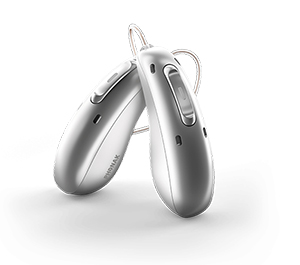Hearing Aids
What Are The Hearing Aids?
A hearing aid is an electroacoustic device which is designed to amplify sound for the wearer, usually with the aim of making speech more intelligible, and to correct impaired hearing closest to the normal levels. There are several types of hearing aids available, each designed to cater to different types and degrees of hearing loss. Modern hearing aids come with various features and technologies to improve the listening experience.
Some common types & latest technology characteristics include:
Rechargeable, Waterproof & Dustproof, Bluetooth & Wireless Connectivity, Remote Support, Invisible, etc
Choosing the right hearing aid and taking care of it properly can significantly improve the quality of life for individuals with hearing loss. It's essential to work closely with an audiologist to find the best solution for your specific needs.
Behind the ear aids (BTE) consist of a case, an ear mould or dome and a connection between them. The case contains the electronics, controls, battery, microphone(s) and often the loudspeaker. Generally, the case sits behind the pinna with the connection from the case coming down the front into the ear. The sound from the instrument can be routed acoustically or electrically to the ear. If the sound is routed electrically, the speaker (receiver) is located in the earmold or an open-fit dome, while acoustically coupled instruments use a plastic tube to deliver the sound from the loudspeaker to the earmold.BTEs can be used for mild to profound hearing loss. As the electrical components are located outside the ear, the chance of moisture and earwax damaging the components is reduced, which can increase the durability of the instrument. BTEs are also easily connected to assistive listening devices, such as FM systems, to directly integrate sound sources with the instrument. BTE aids are commonly worn by children who need a durable type of hearing aid.
BTE hearing instruments that place the loudspeaker directly in the ear without a fitted earmold are often referred to as “Receiver in the Canal” instruments. These instruments use soft ear inserts, typically of silicone, to position the loudspeaker in the patient’s ear.Some of the advantages with this approach include improved sound quality, reduced case size, “open-fit” technology, and immediate patient fitting.
Hearing loss varies for each individual, so no one can say which hearing aid suits someone best before performing a hearing test and an evaluation of one’s personal needs. An audiologist will advice you after the results of the audiometry and discuss with you all the possible alternatives.
If your hearing loss exists in both ears then two Hearing Aids are better than one. Using the most of the remaining hearing at both of your ears will make it easier for you to understand your speech.Furthermore, you will be able to recognize the direction of a sound, something that you will not be able to do so if you were hearing from one ear only.
Proper maintenance and care can prolong the life of hearing aids:
• Cleaning: Regularly clean the devices to remove earwax and debris.
• Storage: Store them in a dry, cool place when not in use.
• Battery Care: For rechargeable models, follow the manufacturer's guidelines for battery maintenance.
• Professional Check-ups: Schedule regular check-ups with your audiologist for thorough cleanings and inspections.
Hearing Aid Brands
Oticon (Denmark) and Phonak (Switzerland) are industry-leading hearing aids system manufacturers worldwide with leading scientific research into hearing loss. Their vision is a world where hearing loss is no limitation! They challenge and push the limits of technology to change the lives of people with hearing loss. EAC have been the official audiology company proud to represent these two top brands for over 40 years. Our legacy is our satisfied customers.

Phonak
Since 1947, we keep on focusing on what matters most: improving speech understanding, changing people’s lives and having a positive effect on society as a whole.
Visit their websiteOticon
Oticon’s mission began over 100 years ago. In 1904, Hans Demant wanted to help his wife Camilla live a better life, unhindered by her hearing loss. Hans helped Camilla with one of the first electronic hearing aids in the world.
Our mission: We challenge conventions and push the limits of technology to change the lives of people with hearing loss.